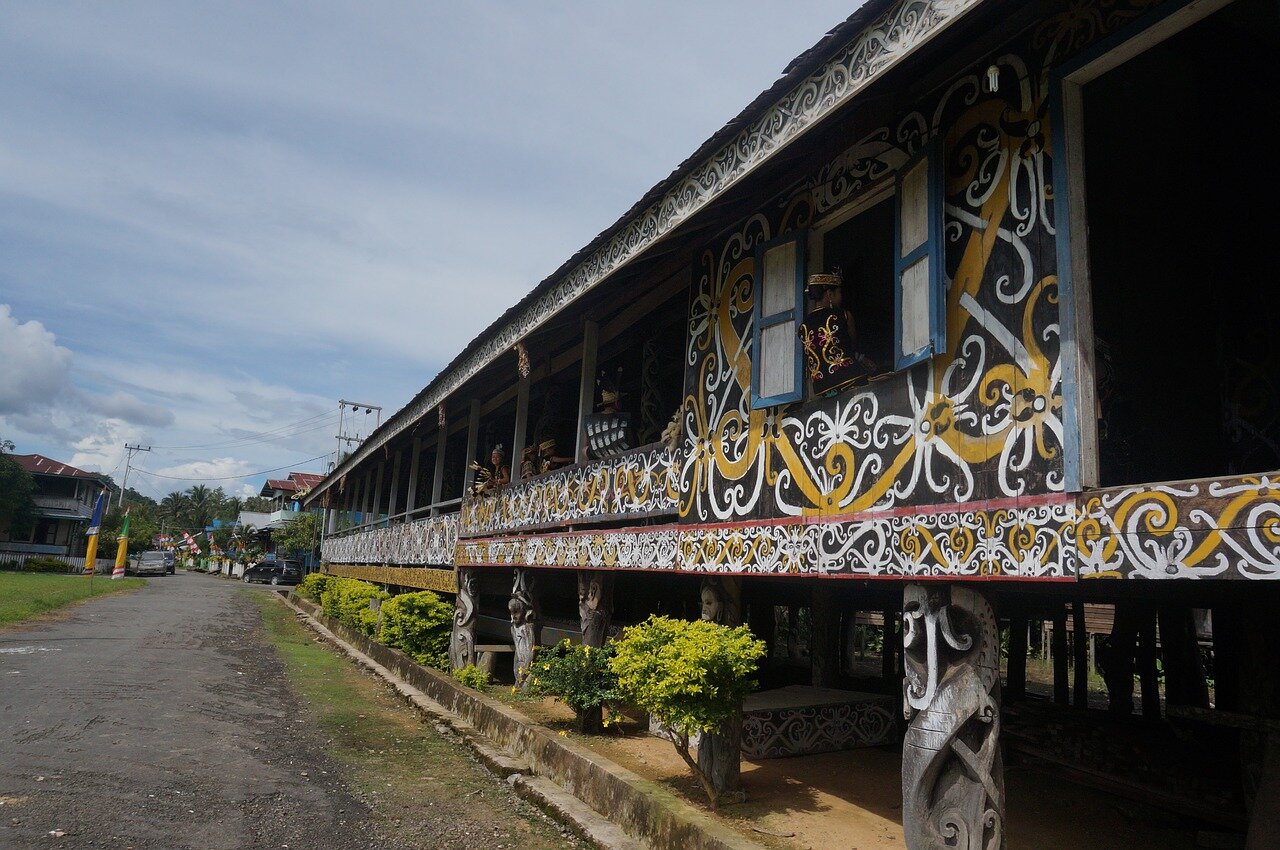A Dayak long house is not just the center of the community; it is the village. It is the architecture. These large structures, sometimes more than two hundred (200) meters long, can have many of separate family apartments, with common areas for cooking, ceremonies, blacksmithing, and socialization. The present transformation of West Kalimantan from a remote jungle wilderness to a dynamic agricultural hinterland is posing a threat to longhouse communities, which taken on a different manner. But at this point, people are preserving and still living with its tradition.
Longhouse are occupied by many families from the Dayak communities. It is also probable for men and women to unite for marriage inside the long house with another ethnicity. In a traditional manner, the longhouse was the biggest political unit to which Dayak people could be recognized. While bigger alliances might exist between zones and groups of long houses or speakers of the same dialect, each person’s main allegiance was always to the longhouse.
Ironwood longhouse in Kalimantan.
While longhouses may vary from region to region, and between several ethic groups, most abide by the same law and system Public life is focused on a long straight corridor. A row of doors on one side of the corridor may lead to each family units. Doors down the other side lead to entrance and exit to the ground or an outdoor veranda. There is also a workspace for rice milling, laundry, and a lot of other worthwhile activities.
As families grow wealthier in a longhouse, they have a choice; to build a single family house or to incorporate features or rooms to their apartment within the longhouse a lot of longhouse apartments extend backwards off the back of the main structure, creating long, uneven chains of units. Other longhouses are surrounded by single family homes. Naturally, it is a tradition that residents contributed labor for all parts of the longhouse and not only on their own area.
These superstructure is not only centered on architecture and design. It is the system of Dayak. It is their government. All the people living inside the longhouse abide by the traditions and customs and this is their realm. Construction takes longer and continuous. The massive ironwood structures and the log columns make it strong as hundreds of them help each other to construct the center of their community. They strongly observe traditional materials and practices, while changing some. The polished hardwood floors are just the thing of today.
Centennial longhouse in Samarinda - Kalimantan (Photo credit Kaltimber)
Some longhouse are surrounded by fields and forests, but even there a lot of materials have become scare, but the innovation is continuously growing. The surroundings have changed a bit and forests are now replaced with rubber trees and oil palms. At the end of the day many people especially Dayak continue to embrace the beauty and art of the longhouse as its tradition is rich in culture, customs and ideologies. It is safe to say that Dayak culture, architecture and the Arts has a rich and significant contribution to the realm of construction, culture and architecture.


